True Stories
Page 32 of 42
 Moody 35
Moody 35
“We crossed the Atlantic Ocean and all 29 days our Hydrovane was doing a perfect job under any conditions.”
“Again you (Hydrovane team) have shown that you really know about the needs of circumnavigators.”
From: Manfred Rausch
Sent: March-12-11
To: Will Curry; Valerie Williams
Subject: Little story
Hi Valerie and Will,
Everything is now installed and working. The promised little story (lost or stolen rudder) is attached (follows):
We crossed the Atlantic Ocean and all 29 days our Hydrovane was doing a perfect job under any conditions.
The rudder was taken off and secured at the stern of the boat, after we made the passage from St. Martin to the BVIs. During short trips between the islands we steered by hand. Now we intended to leave Puerto Rico for the Turks and Caicos Islands. The day before, we checked out and prepared our boat for the passage. The rudder of our Hydrovane windvane could not be found, we lost it, or it had been stolen.
The Sunday, I wrote an email to Valerie at Hydrovane.
Monday, I got in contact with Will by phone and email to clear all necessary details. In the years between we bought the unit originally and today the rudder had been improved and the construction was changed, two options were proposed.
Tuesday, we decided to convert to the new technology, that means changing the shaft and use the improved version of the new rudder.
Wednesday, rudder and shaft were shipped from UK to Puerto Rico, via UPS express service – estimated arrival Friday.
Friday 4 pm we were happy to receive the parts in Puerto Rico.
Saturday, two and a half hours work and the new shaft was on its place, the disassembling of the drive unit took the most of the time, not unexpected because aluminum and stainless steel tend to build oxides which do not “slide off” easily. The instructions and advises we were given were very helpful and finally we managed the changeover.
Thank You, Valerie and Will for the quick service, good advice and the personnel support. Again you (Hydrovane team) have shown that you really know about the needs of circumnavigators.
Barbara and Manfred, SY Balimara
Puerto Rico, March 2011
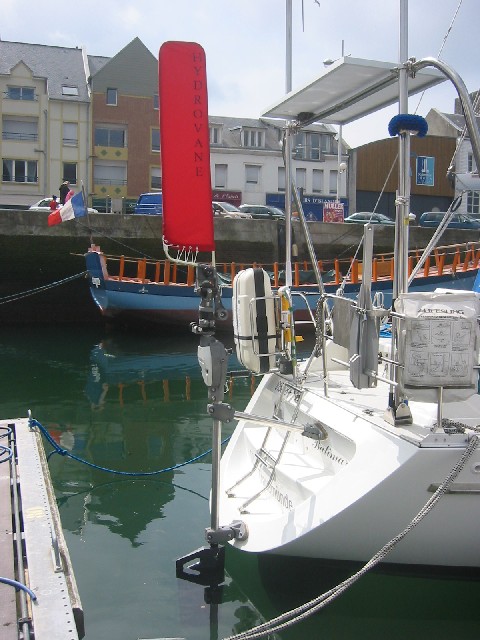
 Wauquiez Centurion 47
Wauquiez Centurion 47
“…So heavy it stripped our rack and pinion autopilot within a few days of setting sail.”
“The Hydrovane worked flawlessly on the crossing and as we were only 2 up, gave us much needed respite from steering.”
From: Philip Bouscarle [mailto:philip@bouscarle.co.uk]
Sent: Wednesday, February 23, 2011 8:52 AM
To: john@hydrovane.com
Subject: Victoria 34 installation
Hi John,
I have had very good experiences with Hydrovane, having sailed a Wauquiez Centurion 47 from Antigua to the UK via the Azores in heavy weather. So heavy it stripped our rack and pinion autopilot within a few days of setting sail. The Hydrovane worked flawlessly on the crossing and as we were only 2 up, gave us much needed respite from steering.
I am now looking at a Vic 34 and see that you have a picture of a Hydrovane fitted with HE Brackets on the website.
You also seem to indicate you favour an A bracket for strength, especially with the new rudder. Presumably the picture on the website was taken before the new rudder was introduced.
Would you recommend an A bracket for a Victoria 34 now?
With best wishes,
Philip
 Custom 39
Custom 39
“It has now delivered effortless steering for thousands of miles on our voyage from Denmark to Cuba.”
From: Leif Stubkjær
Sent: Friday, February 18, 2011
To: John Curry
Subject: New “sock”
Dear John.
Last year we purchased a Hydrovane unit for our 39″ sailing yacht. It has now delivered effortless steering for thousands of miles on our voyage from Denmark to Cuba. We are very satisfied with its performance, but the red vindvane nylon “sock” is now giving up to wear. In other words, we need a new one.
Can you supply this as a package sent directly to a marina in Cuba?
Best regards from
Leif Stubkjaer
 Wauquiez Pretorian 35
Wauquiez Pretorian 35
SV Piko – Pacific Puddle Jump ‘covergirl’
“If there is enough wind to sail the boat well, it steers is great, even with a kite up in many conditions.”
From: Lauren Buchholz
Sent: Thursday, February 17, 2011
To: Linda
Subject: Parts
Hi, I have a hydrovane that is a few years old now. Firstly, it has been great. We are just starting a multi year trip around the pacific, but she has performed as good if not better than I had hoped.
If there is enough wind to sail the boat well, it steers is great, even with a kite up in many conditions. Now have used it almost the entire way from Seattle down the coast to zihuatanejo, mexico and will be using on the way to the south pacific later in march.
Anyway, while doing some cleaning of the main gear unit, we lost both of the little black plastic screws that hold the cover on. I didn’t see those as spare parts, but are they available? I am heading back to Seattle later this month, so if it possible to get a pair that I can bring back down to the boat, that would be great!
Thanks,
Lauren
S/V Piko
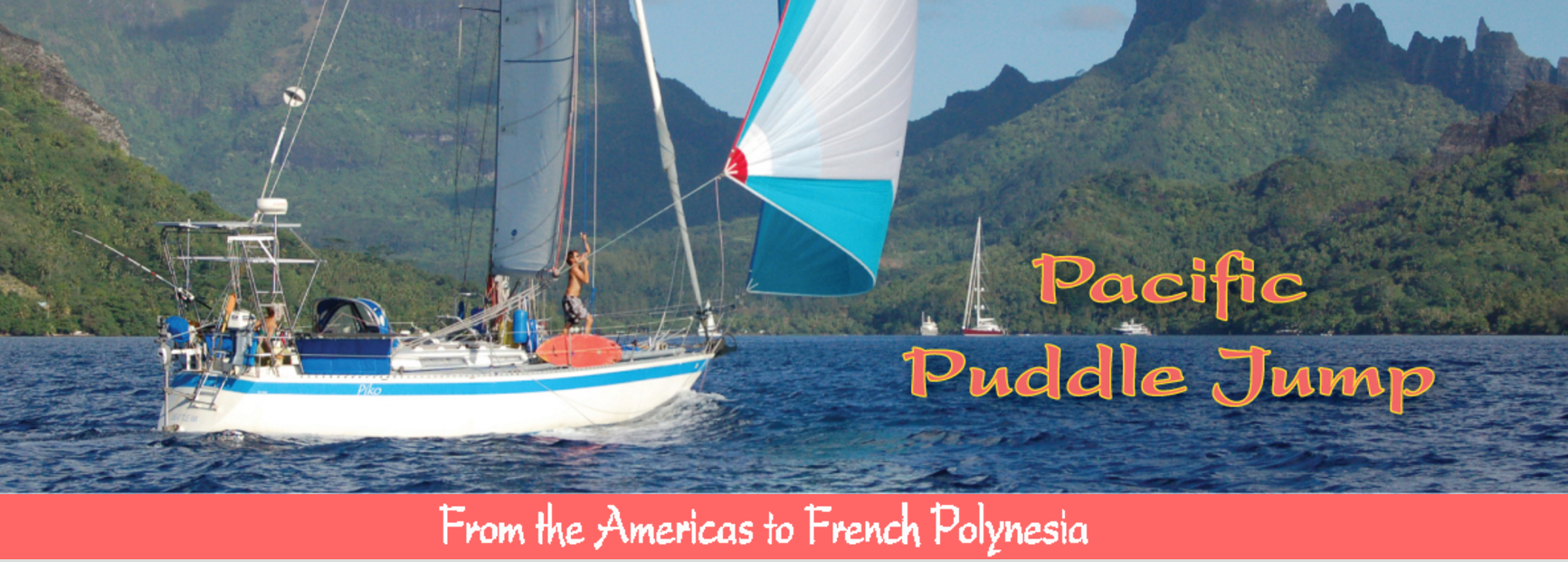
 Tradewind 35
Tradewind 35
“…I think the Hydrovane is the best marine equipment ever invented.”
A review of the ‘big beast rudder’.
From: Robin Anderson
Sent: Tuesday, February 15, 2011
To: John Curry
Subject: Review of big beast rudder
Hi John and team,
Review of big beast rudder at link here with.
In short I am very pleased with the big beastie.
Odd performance when motoring. If I leave the pin out when motoring the rudder takes a set against the prop/keel wash and the weather helm at the wheel is very heavy. Once locked off however the weight comes off the helm and she holds a good line. With the small rudder the opposite was the case – it needed to be left free or the weight was felt on the wheel.
My only concern is how the big beast will work with a tiller pilot when there is no wind. I have bought a Raymarine SPX5 which should be ideal but perhaps the balance of the big blade with waterflow over it will make the unit have to work hard. Will find out soon enough and let you know.
Prefer not to motor anyway so well done.
Cheers,
Robin
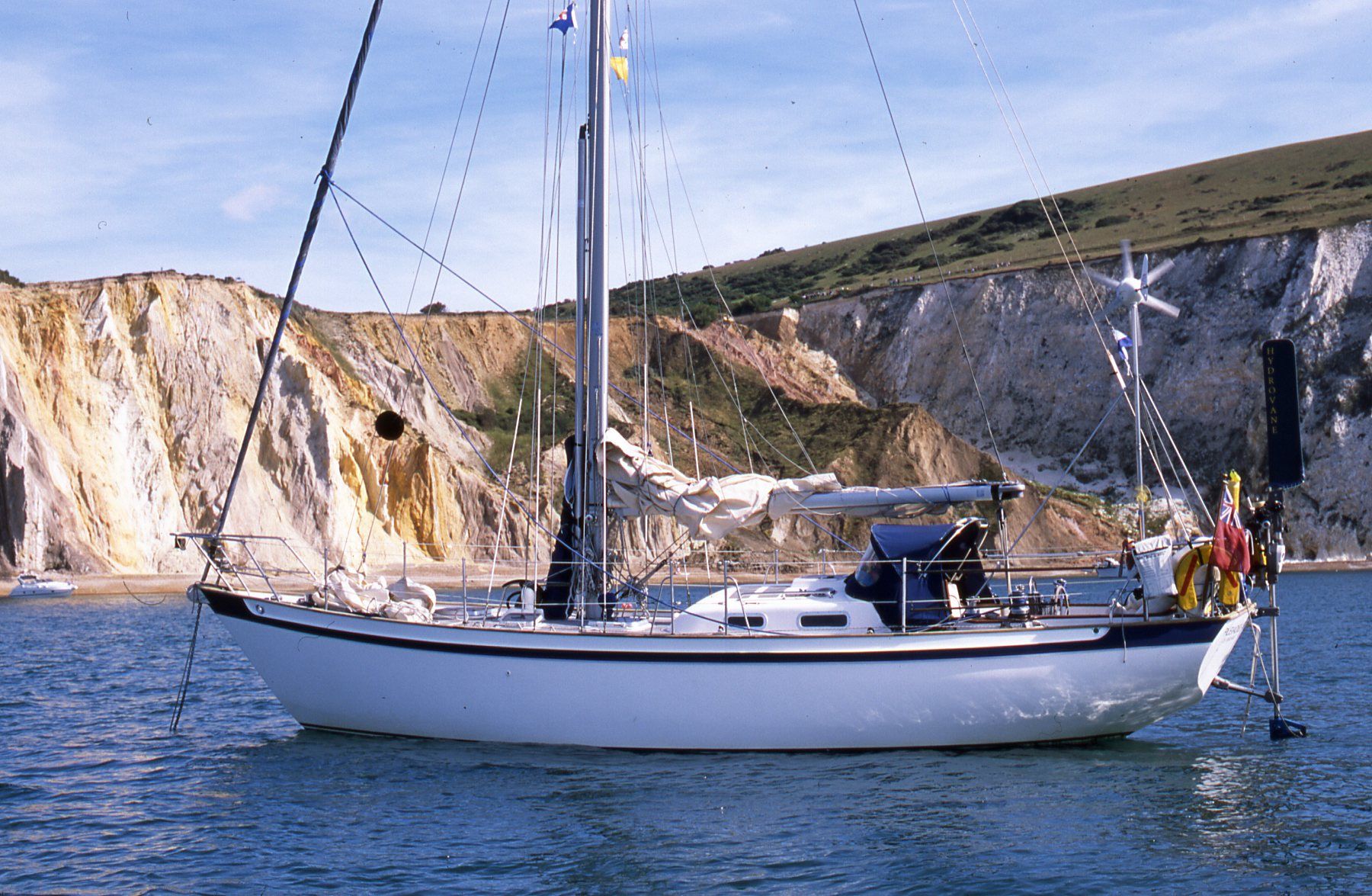
 Garcia 46
Garcia 46
“Another voyage completed; your self steering system is marvelous, incredible for its effectiveness in all conditions; a crew member who has a xxxxxxxxx on her boat says that it does not hold the course nearly as well”
From: Jean Claude Fleuret
Sent: January-31-11
To: Will Curry
Subject: yacht Drisar
Hello Will, hello John,
Il me semble que vous comprenez le français, alors je vais employer ma langue maternelle pour vous écrire, c’est plus facile; de votre côté, n’hésitez pas à me répondre en anglais, je le lis facilement.
Voici une nouvelle navigation terminée; votre régulateur est merveilleux, incroyable d’efficacité par toutes les allures; durant une grande partie, une amie navigatrice qui dispose sur son voilier d’un Windpilot m’a assuré que son régulateur ne barrait pas aussi bien, surtout en ce qui concerne les allures au portant; de plus, elle doit toujours assurer une surveillance pour corriger souvent les trajectoires, choses qui ne se font pas avec un Hydrovane, vraiment fantastique. Bravo pour toute cette ingénierie et toutes les astuces que vous avez mis au point pour obtenir un fini remarquable.
Dans mon cas, sachez que j’ai remplacé le pin de l’immergé par un pin en acier renforcé; après 25’000 milles nautiques, le jeu dans l’immergé est devenu plus important, mais il n’empêche pas son bon fonctionnement.
L’une des deux voiles fournies est complètement usée, c’est pourquoi je vous en commande une nouvelle. Quand j’ai remplacé la voile, j’étais assez fier de voir resplendir ce rouge qui dirige si fidèlement mon voilier Drisar.
Bien cordialement.
JC Fleuret, SY Drisar
Editor’s translation:
It seems to me that you understand French, then I will employ my native tongue to write to you, it is easier; on your side, do not hesitate to answer me in English, I read it easily.
Another voyage completed; your self steering system is marvelous, incredible for its effectiveness in all conditions; a crew member who has a xxxxxxxxx on her boat says that it does not hold the course nearly as well: moreover it requires regular monitoring and adjustments – things that are not done with the Hydrovane, really fantastic. Cheers for the engineering that makes it simple to operate – remarkable.
I did replace the Locking Pin for the Rudder. After 25,000 nautical miles ….. but it did not affect performance. One of the two Vane Covers is completely worn out, hence I am ordering a new one.
When I replace the Vane Cover I am proud to display the red flag which directs my DRISAR so accurately.
JC Fleuret SY Drisar
 Custom 36
Custom 36
A dialogue on storm tactics
“You may be interested to know that on our last passage from New Caledonia to Australia we were surfing at up to 14 knots in 30 – 35 knots of wind and the Hydrovane is fine.”
From: David Colbert
Sent: Thursday, February 10, 2011
To: JEC – Hydrovane
Subject: hydrovane and para-anchors
Hi John
We purchased a hydrovane from you a couple of years ago and have since been sailing the western Pacific and are happy to report that the hydrovane has performed very well.
We also carry a parachute anchor for storm conditions. You will be well aware that setting a parachute anchor off the bow can put a lot of strain on rudders as the boat is forced backwards by the seas. Do you have a recommended procedure for dealing with the hydrovane rudder while using a parachute anchor? In the likely conditions it would be very hard to remove. And has anyone had first hand experience of lying to a parachute anchor in storm conditions with a hydrovane attached to the stern that you are aware of?
Thanks
Dave
___
On Sun, Feb 13, 2011 at 3:52 AM,
John Curry
Hi Dave
Good to hear from you.
I think the para anchor should keep both your rudders safe. As you know the para anchor is intended to hold the boat relatively in position with a slow drift backwards. Regardless, if the boat is picked up and thrown, as can happen in a storm, the rudder is certainly a concern.
We have never heard from anyone with a Hydrovane using a para anchor in a storm.
The Hydrovane rudder is not the worry – it is indestructible. The vulnerable part is the shaft – which can bend under extreme load. A few years ago we upgraded the shaft to accommodate our bigger rudder. Have yet to see one of the new shafts bend.
Hal Roth’s storm tactic was to keep the boat going forward with a tiny storm sail and if still going too fast a drogue would be deployed to slow it down. He felt the big vulnerability when hove to was to the rudder. That concept is what concerns you … and me.
In my 20,000 plus miles of ocean sailing I have only been in one storm – 40 to 45 knots for 32 hours – mid way between Hawaii and Vancouver. The first point is that it is rare to ever get caught in a storm that merits a para anchor and even at those wind speeds which produced 20 or 25 foot seas I would wonder about the challenges of deploying a para anchor. At near the same time we had friends heading to Alaska that were caught in a storm and did deploy a para anchor. They report an equally awful boat motion with or without it and a risky job in deploying it – not that impressed.
Although in our storm we hoved to with our staysail…… and were completely thrown sideways a few times by big waves – but no damage. If I had to do it again I would consider using that small staysail sheeted hard as a rock with a course of 15 degrees off of dead downwind. If boat speed as a worry I would deploy a drogue off the stern.
Cheers
John
___
From: David Colbert
Sent: Saturday, February 12, 2011
To: John Curry
Subject: Re: hydrovane and para-anchors
Thanks for all that John. It is good to get the benefit of your experiences. I agree with the tactic of sailing off at about 15+ degrees from downwind with a very small amount of sail. I have done it once in 60+ knots and it worked well. However, we do carry the para anchor as a requirement of New Zealand Category One Regulations. You must have either a para anchor or a drogue. We can’t tow a drogue because the Hydrovane is offset and would possibly interfere with any drogue. Therefore we have the para anchor which we have never had to stream in anger and hope never to do so!
My concern for the Hydrovane, as is yours, is the shaft if we do ever have to deploy the para anchor, but I guess that is just something we will find out about…
You may be interested to know that on our last passage from New Caledonia to Australia we were surfing at up to 14 knots in 30 – 35 knots of wind and the Hydrovane is fine.
Dave
 Nordic 44
Nordic 44
“Noumea to Auckland… The boat (and all the other ones out with us) pounded and crashed… just about all the boats arriving at that time had leaks from shrouds – to give you an idea… But, the Hydrovane was fantastic… cannot express how pleased we are.”
From: elinpee mongelli
Sent: Thursday, February 03, 2011
To: John Curry
Subject: Mongell’s
Hello,
Firstly, we are now in New Zealand and have thoroughly tested our Hydrovane.
As you suggested…should we encounter severe winds the vane would touch the Bimini.
When we left Brisbane we had NE winds of 10 knots and less…but still our Hydrovane carried on very nicely. From this we went to a Southerly wind of 35 knots which quickly went to a freezing 50+ wind. At that point the vane did touch…so we have rectified that.
We gave multiple thanks to the Hydrovane as it sailed the boat on beautifully to Noumea.
On leaving New Caledonia we had the rockiest trip from Noumea to Auckland over three days. The boat (and all the other ones out with us) pounded and crashed…just about all the boats arriving at that time had leaks from shrouds – to give you an idea… But, the Hydrovane was fantastic… cannot express how pleased we are.
Unfortunately … we do have electrolysis on the Bearing Cap and cannot figure out why. We have completely isolated the hull from the metal and most times the shaft is out of the water …. the vane is on for passages only. Do you have any ideas?
Thanks in advance
Lorna and Philip
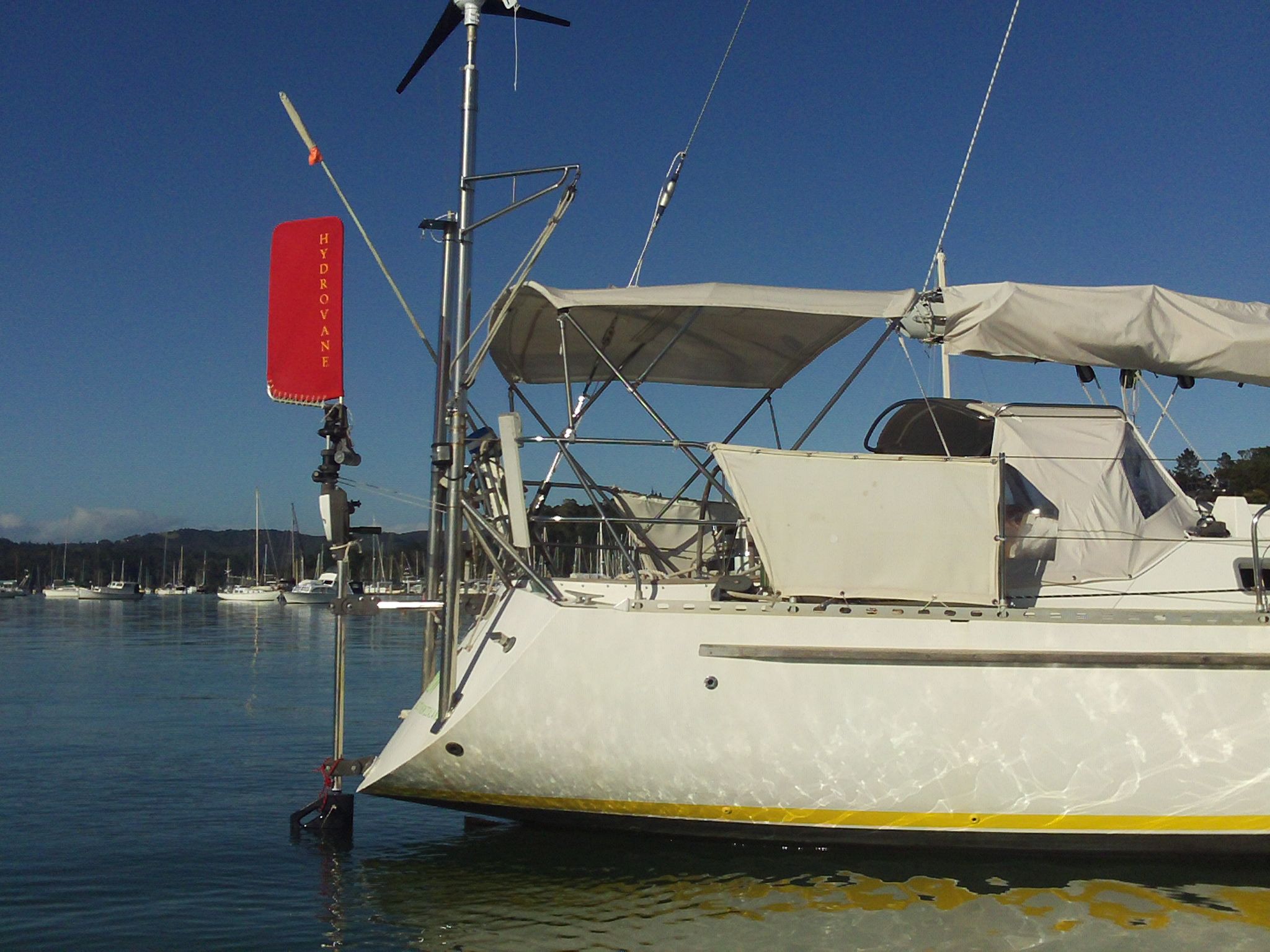
 Westerly Corsair 36
Westerly Corsair 36
“I rated it No 1 piece of kit for the transatlantic crossing and use it for passage making all the time.”
From: Iain Carpenter
Sent: February-01-11
To: Will Curry
Subject: RE: Hydrovane Parts
Hi Will
Incidentally I really do rate my Hydrovane, it sits there all day no sound, no power consumption, no problems happily keeping us on course without complaint….. I rated it No 1 piece of kit for the transatlantic crossing and use it for passage making all the time.
I have told countless people with boats <40ft that they couldn't do better than fit one if they don't already have wind vane steering. Those that can't manage the Hydrovane probably shouldn't be blue water sailing!! With best wishes Iain Iain Carpenter MD FRCP Emeritus Professor Centre for Health Services Studies University of Kent
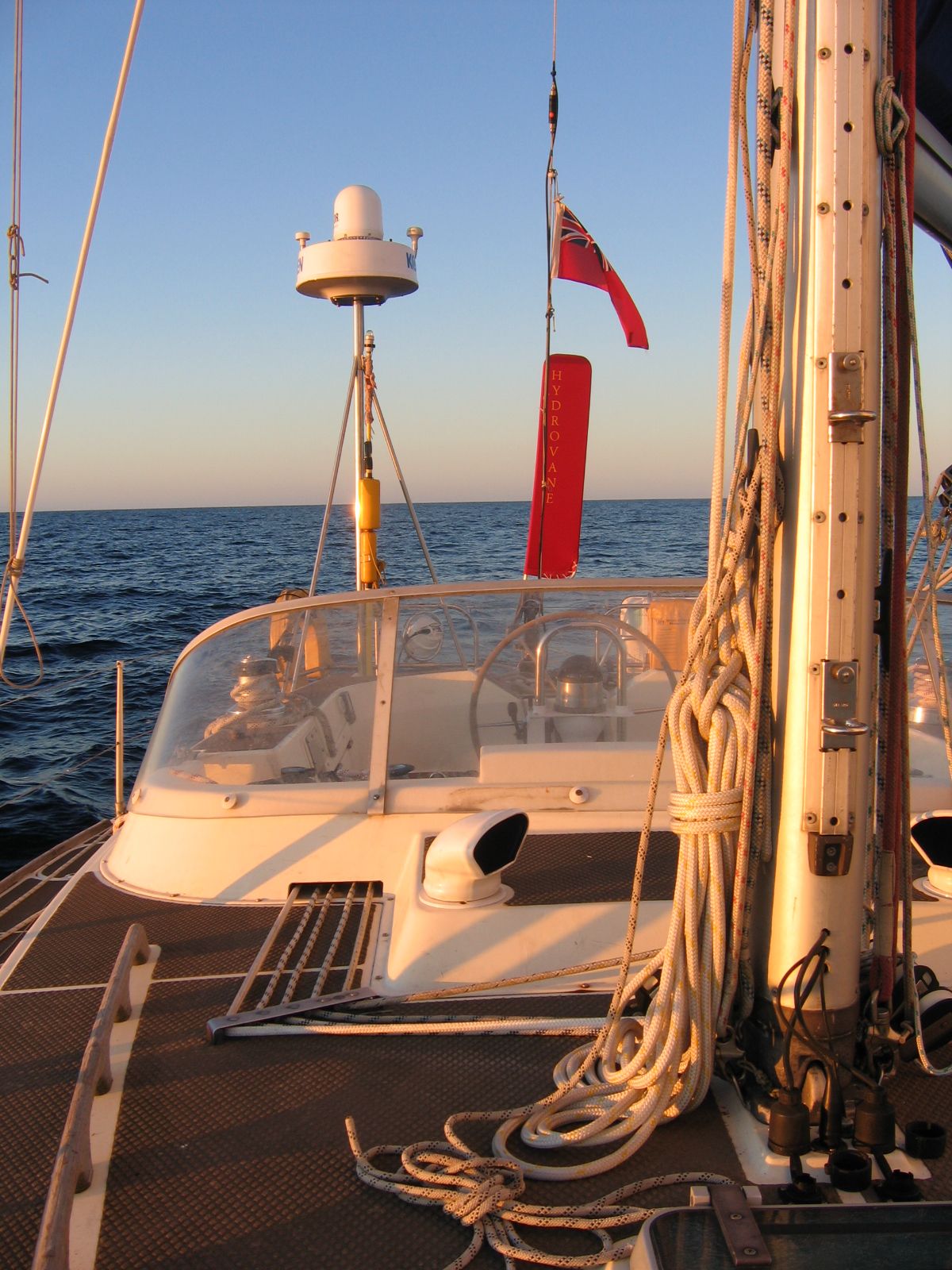
 Islander 44
Islander 44
“…near Point Conception, 25+knots with large steep seas, Hydro worked like a champ.”
From: Skip White
Sent: January-18-11
To: Will Curry
Subject: Re: Hydrovane Parts Order
Will: Thank you for the opportunity to add a link to your website. I have attached a picture for your review, I will send you a small video clip in the future, I have one I took while near Point Conception, 25+knots with large steep seas, Hydro worked like a champ.
Sincerely,
Skip White
Cruising Expeditions
s/v Dolphin
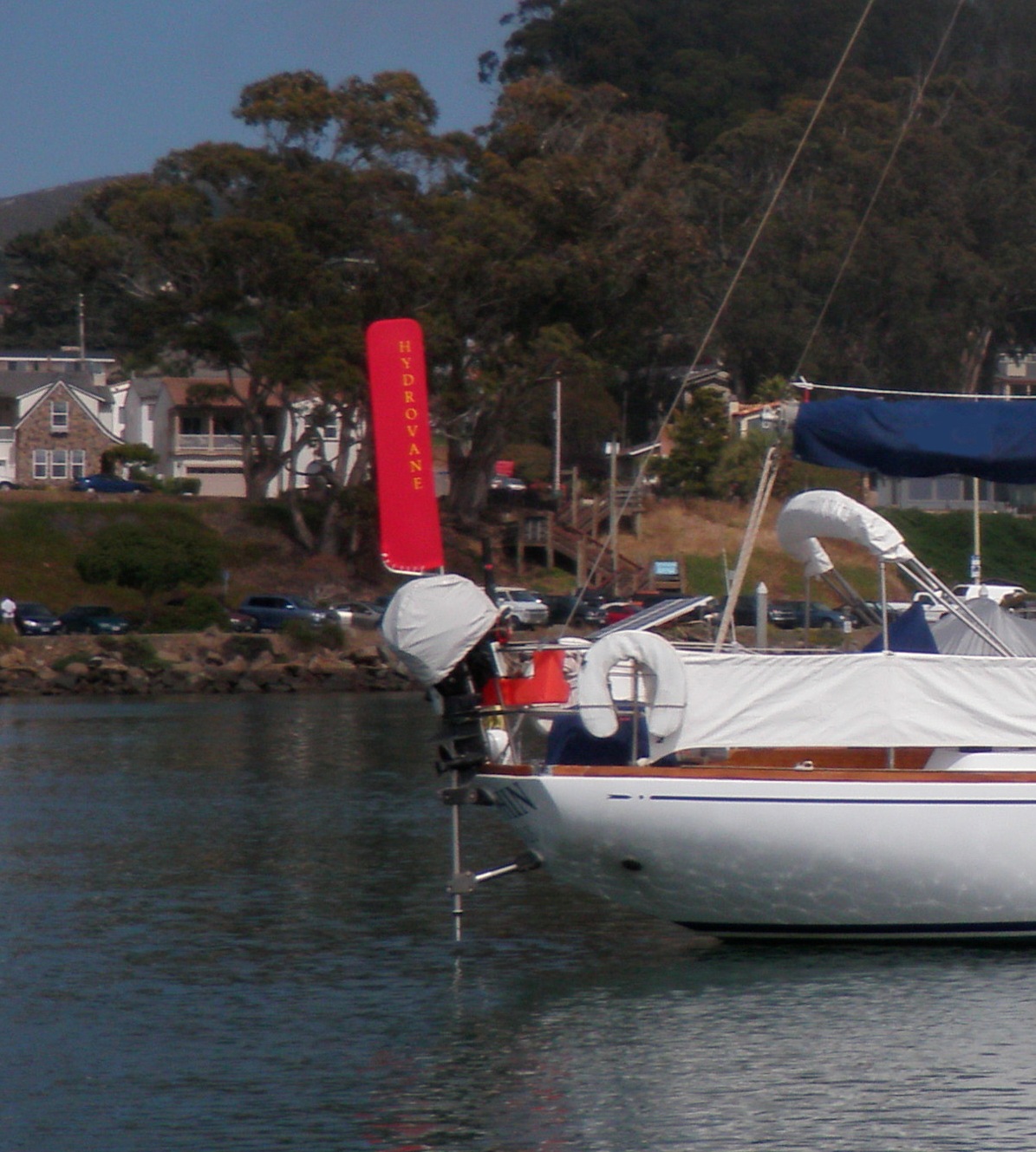
 Cavalier 37
Cavalier 37
“WONDERFUL!!! What a superbly designed and engineered autopilot!”
From: Sam Petty
Sent: December-22-10
To: Valerie Williams; Will Curry
Subject: arrived, installed, sailed: superb!
Dear Valerie and Will,
thanks so much for your help and prompt despatch of the additional parts – bolted straight on yesterday and went for a test sail: WONDERFUL!!! What a superbly designed and engineered autopilot!
Very excited and impressed.
Thanks again, it’s been a real pleasure dealing with you,
Best regards,
Sam
 Vancouver 34 - Tips
Vancouver 34 - Tips
“That said, I would not swap my Hydrovane for any other gear.”
From: richard blunt
Sent: December-20-10 5:09 AM
To: Will Curry
Subject: Re: SY Fleck: update, photo, and more bits please
Hi again Will.
So far as performance is concerned, the unit did indeed work right out of the box, on the middle settings, either when beating, or when running downwind so long as there is some sail on either side of the mast (I imagine that no vane gear copes well if the yankee is sometimes filling, and then collapsing behind the main).
Most of our trade wind running has been done with our small fixed staysail boomed out on one side, and the furling Yankee boomed out on the other side. In a gale we run on just the staysail, and when the wind falls light we unwind the whole yankee. The hydrovane copes with all this, although in confined waters very slight course adjustments may be required. The main remains under its cover. It is rather sedate sailing, but we are cruisers, and not racing anywhere at this time of life.
Reaching is a little bit more difficult. Getting the boat balanced is important, but our boat does of course carry different amounts of weather/lee helm, depending on the wind strength. So with major changes in wind strength we found that we were either rounding up, or testing the gybe preventer system!
We got to Australia from the UK almost entirely under twin headsails. Since then cruising has involved much more reaching, and I have got better at adjusting things. It seems to be important to fiddle with only one thing at a time, and to allow a cup of tea between each adjustment to let everything settle down! The key things are the sail trim and the course adjuster on the Hydrovane. Usually these can be fiddled so that the ships wheel is in the dead ahead position, and we are pointing where we want to go. Then we will stay on course.
It is also important not to be over canvassed, as if the boat is well heeled over balance is greatly affected by gusts and lulls.
If I find myself having to lock the wheel off centre, then I know we may be in for an unstable ride.
To be quite honest I don’t find the that adjustments on the Hydrovane (vane slope, gear ratio) make very much difference. I do however recommend that users check that they remembered to put their Hydrovane in gear before swearing at it’s lack of performance, for they are almost human, and very sensitive to this sort of abuse!
I hope these comments are helpful, I realize that they are largely a reiteration of the tips on the website, but we sailors like to find things out for ourselves, and only then to believe them! That said, I would not swap my Hydrovane for any other gear.
Richard
Contact
 Crealock 34
Crealock 34
“…this is just simply one of the finest bits of engineering and workmanship I’ve ever seen.”
“I’ve looked at every vane available on the market and am confident in saying that this is hands down the best.”
Sent: Friday, December 10, 2010
To: Valerie Williams
Cc: John Curry
Subject: Re: Hydrovane Order – John Fogarty
Season’s Greetings Valerie!
I’m happy to report that our new ‘vane arrived safe and sound here in Redmond. We didn’t have to pay any duty and as you reported the 5 packages were all easy to move. The packing was top notch and all the parts are in perfect shape.
I want to thank you, and commend you on the remarkable and professional job you’ve done at making this scary international mail order purchase seem downright easy!
We’re looking forward to getting the vane mounted on our Crealock 34 when our winter weather gives us a break. I’ve been test fitting the pieces and inspecting everything with a magnifying glass – this is just simply one of the finest bits of engineering and workmanship I’ve ever seen. I’ve looked at every vane available on the market and am confident in saying that this is hands down the best.
Thanks again!
John Fogarty and Mary Clem – SV Slappey II
Installation mock up… the ‘Sternmulator”:

 Moody 376 - Thru Platform
Moody 376 - Thru Platform
“…confirm that we can fit and remove the rudder quite easily from the bathing platform.”
From: Nige and Al – Yacht Strummer
Sent: December-12-10
To: Will Curry
Subject: Yacht Strummer – Hydrovane rudder fitting/removal
Hi Will,
I thought I would email you to confirm that we can fit and remove the rudder quite easily from the bathing platform.
Here is the method (see also attached photos):
1. Attach safety line to rudder handle and Hydrovane top bracket.
2. Kneel on bathing platform holding rudder in left hand – right arm is around the Hydrovane shaft and right hand holding the safety line.
3. Lean over the back of the bathing platform and fit rudder onto shaft.
4. Hold rudder in place using right hand/safety line whilst fitting the pin and its retaining clip with the left hand.
It takes about 1 minute, removal is just a reversal of the process and, so far, I have not fallen in!
Kind Regards,
Nigel Battarbee
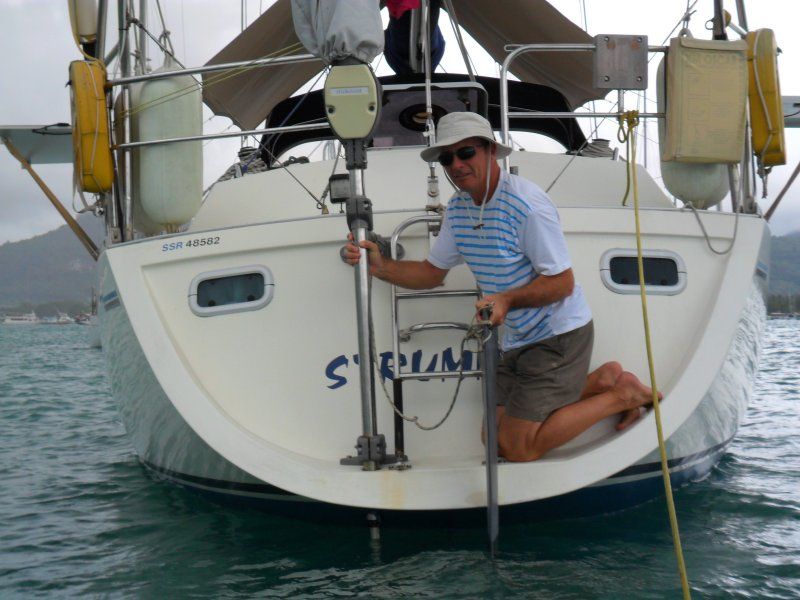
 East Coast 31
East Coast 31
“We are delighted with the ease of use, its stability and good “watch keeping” abilities as regards the course made good.”
From: Ed Davis
Sent: November-30-10
To: Will Curry
Hi Will,
Just an update.
A few weeks ago in quite torrential rain we fitted the brackets and tube to the transom of our yacht. We had her slipped for the process, as with an extremely tender dinghy we would certainly have gone swimming I am sure if we had tried to undertake the exercise afloat.
We mounted the device about a foot off centre to port. This was because an internal bulkhead would have resulted in a centre mounted device having the starboard bolt of both brackets going into the interior of the yacht, accessible only via the starboard quarter berth, with the port bolts going into the cockpit.
Two weekends ago we fitted the rudder, head & wind vane, worked out how to use the device and then enjoyed a few hours of sailing in up to 20 kts of true wind, without using our wheel. We are delighted with the ease of use, its stability and good “watch keeping” abilities as regards the course made good.
We look forwards to many years of a successful partnership.
Cheers & thanks
Ed Davis


